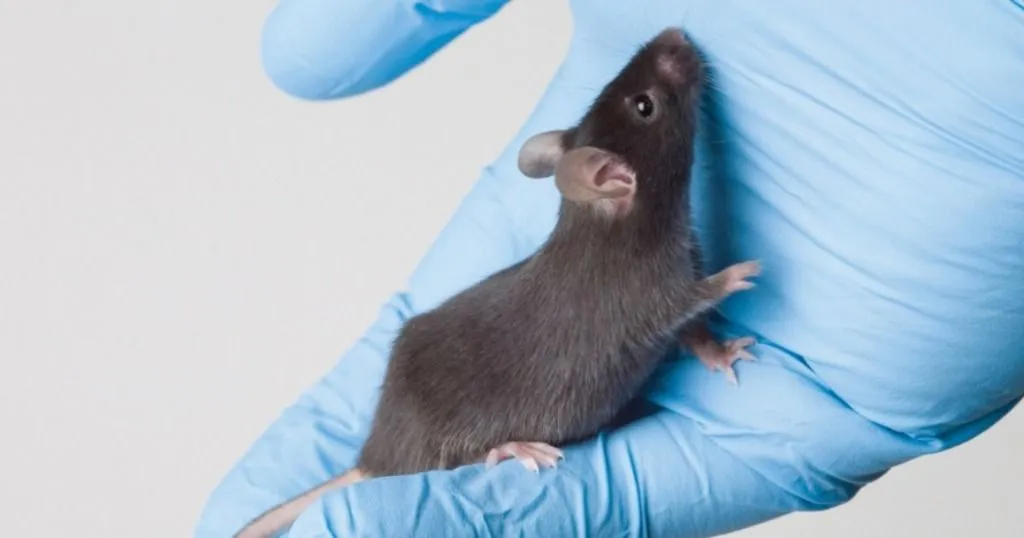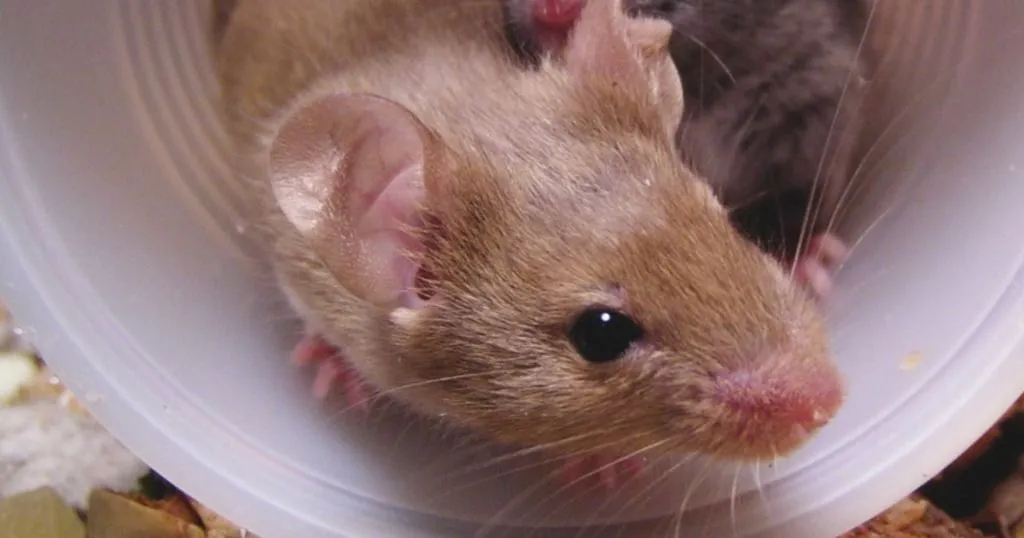Optogenetics - Shining a light on brains and behavior

Brains are complicated. We all know that. Like an entangled bunch of wires. Still, over the years, neuroscientists have been able to map out several brain regions and their functions in behavior and physiology.
Posted by
Published on
Thu 13 Dec. 2012
Topics
| Behavioral Patterns | Elevated Plus Maze | EthoVision XT | Exploratory Behavior | Mice | Operant Conditioning | Optogenetics | Rats | Video Tracking |
Brains are complicated. We all know that. Like an entangled bunch of wires. Still, over the years, neuroscientists have been able to map out several brain regions and their functions in behavior and physiology. Pretty impressive but when it comes down to the precise determination of which brain cells are responsible for what function, many things are still a mystery.
Traditional methods
Traditionally two methods were used for this kind of research, being pharmaceuticals (chemical compounds, drugs) and electrodes. While pharmaceuticals can target specific cell receptors to trigger specific neurons, they are not temporally precise. It takes time for them to work after administration, and once they work, the drugs can stay in the system for a certain amount of time. In most cases, activation actually lasts too long. It would be so much easier if cells could be turned on and off like a light switch. Therefore, many scientists have started using electrodes. The problem with electrodes, however, is that they are often not spatially precise enough. So in many cases, neurons in the vicinity of the targeted neurons are also activated.
The light-bulb moment
In the last decade a new method was invented to actually activate or even inhibit neurons with light. Just like turning on a light switch, literally. Scientists have found a way to insert light-sensitive receptor proteins (originally found in algae) into mammalian neurons, making them sensitive to activation by light of specific wavelengths. This offers both a temporal and spatial precision that was previously unpreceded. It’s not surprising this technique has been named Method of the year (Nature) in 2010.
We are talking optogenetics here.
Optogenetics
“Optogenetics is a technology that allows targeted, fast control of precisely defined events in biological systems as complex as freely moving mammals.” (Karl Deisseroth, Nature Methods, 8, 26-29.)
Optogenetics has already undergone rapid developments in the last few years. While first tested ex vivo, soon it was possible to use it in live animals, first restrained and now in animals implanted with fiber optics that are able to freely move around in their cages. Initially, blue light was used, now new receptors are developed that are sensitive to other wavelengths of color.
Of course optogenetics holds great promise for behavioral research as well. Not only can we now more specifically determine the actual effects of stimulation of certain neurons on behavior, it also refines operant conditioning tasks and preference/avoidance tests. This is where Noldus come in: a perfect challenge for EthoVision XT and Trial & Hardware Control.
The way we do neuroscience
Garret Stuber (www.stuberlab.org) honored our headquarters (Wageningen, The Netherlands) with a visit a while back, to present his lab’s work on optogenetics. As he puts it: “Now it is cutting edge technology, relatively new, and still being refined. But in 5 years, this will be the way we do neuroscience.”
Addiction and neuropsychiatric disorders
At the Stuber Lab, neural circuits that are involved in addiction and neuropsychiatric disorders are studied. They are interested in learning how activation or inactivation of certain neurons influences behavior, by performing several behavioral tests. Stuber says: “It is difficult to do these kinds of test without automated triggers. It doesn’t work as well if you have to manually turn on the laser for optogenetic stimulation each time the animal is at the location or performs the behavior you specified. Therefore, Trial & Hardware Control is basically essential for these kinds of tests.”
Real-time place preference
As Stuber describes it, at their lab they often like to start with a straight-forward real-time place preference test. In this test the animal is placed in a rectangular open field with two distinct sides. One of these sides is paired with optogenetic stimulation. Depending on whether this stimulation is activating or deactivating, and which neurons are affected, this can be a rewarding or aversive stimulus for the animal. If in further sessions the animal spends more time on the stimulated sides, it is fair to conclude the stimulus had a rewarding effect. If the animal avoids this side, the stimulus was aversive.
In practice, EthoVision XT Trial & Hardware Control is programmed to pair a zone (one side) with a trigger. This command goes through the IO-box and turns on the laser for optogenetic stimulation. “The great thing about Trial & Hardware Control is that you can create a protocol more complex than just one pairing of animal location (or behavior) to a trigger. You can create multiple output signals, for example define five different zones and pair these with five different frequencies of optogenetic stimulation. This way you test out what the optimal frequency of stimulation is. This is important because some neurons are responsible for different actions, depending on their firing rate and thus the frequency with which they are stimulated.“
Anxiolytic and anxiogenic stimuli
Stuber also uses optogenetics to study the possible anxiolytic or anxiogenic functioning of neurons. He describes a 15 minute off-on-off stimulus test, in which the animal is placed in an elevated plus maze. EthoVision XT Trial & Hardware Control can be programmed to turn on a optogenetic stimulation between minute 6 and 10 of the test. The first and last five minutes of the test the animal is not stimulated. The behavior of the animal is video tracked. If the animal spends significantly more time in the open arms of the plus maze during the stimulation phase, stimulation of the neurons are thought to have a anxiolytic effect.
Other possibilities for optogenetics in behavioral research
A very valuable and yet straight-forward test is that of open field locomotion in response to optogenetic stimulation. Velocity, movement, and rotation are interesting behaviors that can be easily assessed with video tracking, and that are useful indicators of neuron functioning. Stuber also mentions that Trial & Hardware Control can be a great asset to automate operant tests in which the behavior of the animal is detected (e.g. a nose poke or lever push) and subsequently triggers optogenetic stimulation. This can be used for either rewarding or aversive learning.
A “bright” future for optogenetics
While it has undergone rapid developments, there are a lot more possibilities in the future of optogenetic research. For example, while optogenetics is often used to stimulate neurons, it can also be used to disrupt neuron signaling, effectively turning them off. And instead of just stimulating or deactivating neurons, optogenetics can also be used to record the activity of neurons. Stuber comments that there is already a lot of proof of principle, but that actual studies that incorporate this in behavioral testing are not published yet. It does show great promise for the future, as it is already possible to visualize neuron activity and even discriminate firing rate according to the colored light intensity. “It would be great to combine it all; stimulating one type of neuron, while recording the effect it has on the other type of neuron, imaging the firing rate, and while tracking the location and behavior of the animal”, says Stuber.
Acknowledgements
Thank you, Garret Stuber and the Stuber Lab (www.stuberlab.org), for your help with this blog post!
Further reading
Go to www.stuberlab.org for more information on the work of Garret Stuber and his colleagues. Some recent publications that might interest you:
- Stamatakis, A.M.; Stuber, G.D. (2012). Activation of lateral habenula inputs to the ventral midbrain promotes behavioral avoidance. Nature Neuroscience, 15(8), 1105-1107.
- Van Zessen, R; Phiilips, J.L.; Budygin, E.A.; Stuber, G.D. (2012). Activation of VTA GABA neurons disrupts reward consumption. Neuron, 73, 1184–1194.
- Sparta, D.R.; Stamatakis, A.M.; Phillips, J.L.; Hovelsø, N.; van Zessen, R.; Stuber, G.D. (2011). Construction of implantable optical fibers for long-term optogenetic manipulation of neural circuits. Nature Protocols, 7, 12–23.
- Stuber, G.D.; Britt, J.P.; Bonci, A. (2011). Optogenetic modulation of neural circuits that underlie reward seeking. Biological Psychiatry, 71, 1061-1067.
- Stuber, G.D.; Sparta, D.R.; Stamatakis, A.M.; van Leeuwen, W.; Harjoprajitno, J.E.; Cho, S.; Tye, K.M.; Kempadoo, K.A.; Zhang, F.; Deisseroth, K.; Bonci, A. (2011). Amygdala to nucleus accumbens excitatory transmission facilitates reward seeking. Nature, 475, 377-380.
Related Posts

No science fiction: Magnetogenetics and how to induce animal behavior

